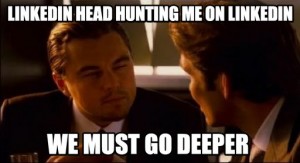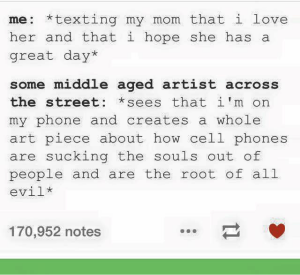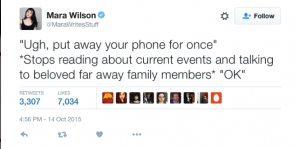
I have already admitted that I am a bad ‘digital native’ but that doesn’t mean I’m incapable of learning quickly. I have finally decided to listen to the multiple speakers that have spoken to our Social Media for Information Professionals course about the benefits of LinkedIn. I used to be under the impression that LinkedIn was redundant for employers, but I have switched gears into thinking that LinkedIn’s potential lies in its ability to cultivate a network for open communication.
I decided it was time to swallow my negative outlooks on LinkedIn and make an account. Many of you who know me will have noticed within seconds of me signing up. I even got a “welcome to the dark side” message within ten minutes, but for those of you who haven’t noticed because you don’t have LinkedIn, I have some explaining to do.
For one, the number of social networking sites (SNSs) is almost endless (Boyd, 2007). Hootsuite currently supports thirty-five social SNSs (Swanson, 2016) and brings potential to librarians. So which platform do we sign up for? I have noticed that from the readings and speakers for the course, four main platforms have been continually cited: Facebook, Twitter, Instagram, and LinkedIn. As librarians we have an obligation to keep up and stay in tune with rapidly changing technology and SNSs. In Walt Crawford’s article Successful Social Networking in Public Libraries he states, “Libraries need to stay in touch with all aspects of their communities, be welcome to new users and new ideas, and serve the local needs of local users.” I agree that good libraries stay in touch with their communities and many of these communities are online. For this reason, I am signing up for the only SNS mentioned in class that I have yet to sign up for: LinkedIn.
If you are like me, and for some strange reason STILL haven’t jumped on the LinkedIn bandwagon, I have compiled some best practices for building a LinkedIn account to help you out.
One article was particularly helpful for the basics of signing up. Bernard Marr in How To Create A Killer LinkedIn Profile That Will Get You Noticed discusses ten practices to help individuals get started:
“Start with a professional photo
Make your headline stand out
Fill out the “summary” field with 5-6 of your biggest achievements
Add images or documents to your experience
Fill out as much of the profile as possible (I have yet to do this, but it’s important that I have gotten started)
Keep your work history relevant
Add links to relevant sites
Ask for recommendations
Use status updates to share industry-relevant content” (Marr, 2015).

Although some of these tips seem obvious, for those who have never used LinkedIn, it can be helpful in getting started and if you follow these basic steps, you can almost ensure that your profile will be viewed as competitive. Lists may vary depending on who is being targeted, but as an introduction to the LinkedIn world, these steps helped me get started.
Again, as librarians we have an obligation to our communities to stay relevant, and this means staying up-to-date with SNSs and other relevant library systems. As for me, I have to get beyond step two of Marr’s article if I will be able to able thrive on LinkedIn.
Resources
Boyd, Danah M., and Nicole B. Ellison. “Social Network Sites: Definition, History, and Scholarship.” Journal of Computer‐Mediated Communication 13.1 (2007): 210-30. Web.
Swanson, Tori. “Intro to Social Media Strategy.” Social Media for Information Professionals. Vancouver. 8 Mar. 2016. Lecture.
Crawford, Walt, and Ebrary Academic Complete (Canada) Subscription Collection. Successful Social Networking in Public Libraries. Chicago: ALA Editions, an imprint of the American Library Association, 2014. Web.
Marr, Bernard. “How To Create A Killer LinkedIn Profile That Will Get You Noticed.” Pulse (2015) Accessed 20 March 2016. Blog. https://www.linkedin.com/pulse/how-create-killer-linkedin-profile-get-you-noticed-bernard-marr.




